
Health Care REIT still growing
5/17/2015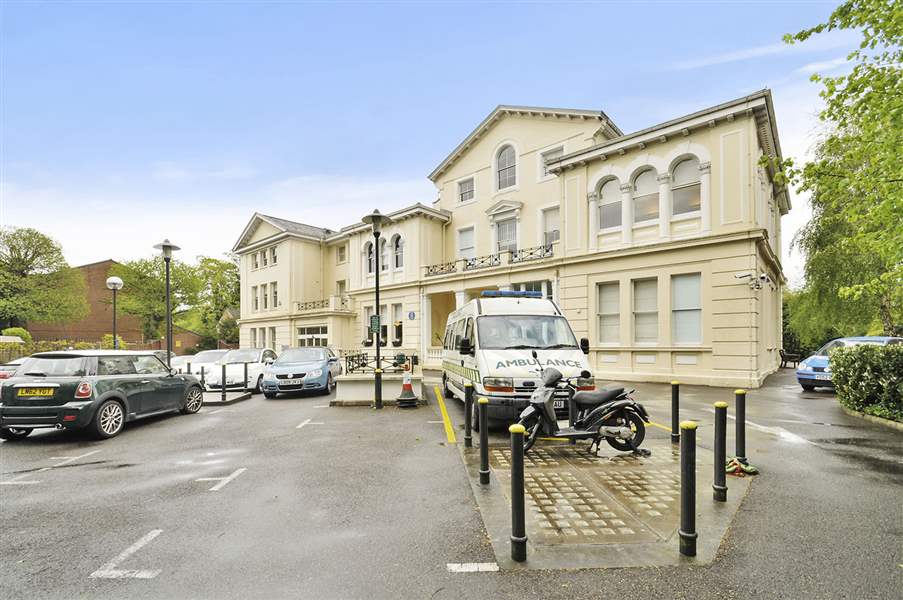
The Cancer Centre London, an outpatient cancer-treatment center, opened in 2003 in London near Wimbledon, a suburb district.
HEALTH CARE REIT inc.

The Cancer Centre London, an outpatient cancer-treatment center, opened in 2003 in London near Wimbledon, a suburb district.
The year was 1970.
Two northwest Ohio residents, Bruce Thompson of Lima and Frederic D. “Fritz” Wolfe of Perrysburg, decided to create an investment company unlike any other before it.
They would start a real estate trust that would finance and acquire properties, sell shares to investors, and pay dividends from the operating profits of those properties it owned.
Real estate investment trusts — REITs — weren’t novel, having been around since 1960. But their idea for property acquisition was unique.
“Health Care Fund,” the name Mr. Thompson and Mr. Wolfe gave their REIT, would invest solely in nursing homes and clinics. Headquartered in Lima, theirs would be the first health-care real estate investment trust.
Their reason for focusing on health care was pragmatic: The move greatly benefited Wolfe Industries, Mr. Wolfe’s family-owned business in Lima.
Wolfe Industries had four subsidiaries tied to nursing-home construction.
Lima Lumber sold the building materials, Wolfe Industries Construction built nursing homes, Western Ohio Corp. was a trucking and investment firm, and Western Ohio Transportation Co. was a stone hauler.

Zack Ottenstein, director, market communications, left, Christy Stone, senior vice president, people & performance, and Jeff Miller, chief operating officer, in a meeting.
With Health Care Fund’s available capital to invest, it would be particularly useful to finance nursing home projects that Wolfe Construction could build.
Predictably, the first properties that Health Care Fund bought were two Ohio nursing homes, in Upper Sandusky and in Edgerton, that were owned by Wolfe Industries.
In its first year, Health Care Fund was capitalized at $900,000. It had just the two nursing homes in its portfolio that had a total value of $797,895.
Forty-five years later, Health Care Fund — renamed Health Care REIT Inc. in 1985 — bears little resemblance to the tiny investment trust from which it sprang.
For starters, the company no longer resides in Lima. Instead, it operates from the former Dana Holding Corp. headquarters campus on Dorr Street in Toledo.
More importantly, the financial profile of Health Care REIT, whose shares trade on the New York Stock Exchange using the ticker symbol HCN, is enormous.
Health Care REIT is now the nation’s largest — or second-largest, depending on the metric used — health-care real estate trust. It is a $40 billion company in terms of enterprise value — a firm’s combined market capitalization and debt minus its total cash.
Its 2014 revenues were $3.34 billion, and its funds from operations, a significant measure for REITs, was $1.27 billion. Its total assets are more than $26 billion.
By comparison, Health Care Property Investors, the Toledo company’s biggest rival, had revenues of $2.27 billion and FFO of $1.41 billion.
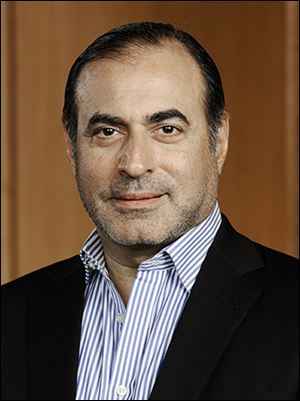
DeRosa
“Not many people know that we are the fourth-largest company in the state of Ohio behind Procter & Gamble, American Electric Power, and Kroger in terms of enterprise value,” company Chief Executive Tom DeRosa said. “I was speaking to a group of students the other day and asked for a show of hands and said ‘Who’s ever heard of us?’ ”
Few hands were raised, the CEO said.
But while the number who know the company may be small, the reach of its asset portfolio is vast.
As of this month it owned 1,377 properties scattered across 46 states — only Hawaii, Wyoming, North Dakota, and South Dakota are not represented — and six Canadian provinces.
Since 1998 it has owned properties in the United Kingdom. The last three years Health Care REIT has expanded its U.K. holdings, owning 105 properties including four of the top private-pay hospitals in London.
Overall, about 61 percent — 835 properties — owned by the company are senior-assisted living facilities, which are housing with some level of personal health and living assistance.
About 21 percent, or 283 properties, are long-term and post acute-care facilities, which are rehabilitative-care facilities for patients with acute medical problems. The rest — about 259 properties — are outpatient medical facilities, medical office buildings, five hospitals, plus 11 parcels of land.
“About 87 percent — and growing — of our revenues come from private-pay sources” and not government programs such as Medicare or Medicaid, Mr. DeRosa said. “We much prefer the stability of being involved in the private-pay side of health care,” he added.
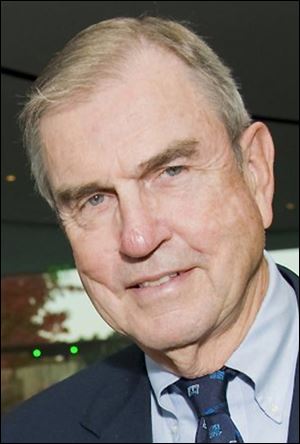
Wolfe
Until this month, the firm even held a 49 percent stake in seven life science laboratory buildings on the campus of the Massachusetts Institute of Technology. But it sold its ownership stake for $573.5 million to its partner in the buildings, Forest City Enterprises Inc. of Cleveland.
Mr. DeRosa said Health Care REIT became part-owners of the buildings in 2009 when financing for construction was tight, and Forest City turned to the Toledo firm for funding. “The investment was an opportunity for us, and we had a huge return on the sale,” he said.
“The reason we sold it is Forest City is converting to a REIT and it made sense to sell. But it doesn’t mean we wouldn’t acquire more life-science buildings if the deal made sense,” the CEO added.
Steady growth
From its small start, Health Care REIT began growing its portfolio by acquiring nursing homes, which are considered long-term care facilities.
In 1987, shortly after changing its name, the company’s assets totaled $157 million. Ten years later, its assets had ballooned to $836 million comprised of nearly 194 nursing homes and assisted-living facilities, and by the end of 1998 assets exceeded $1.1 billion.
George Chapman, CEO of Health Care REIT from 1996 until he stepped down last year, ran the company through much of its big growth years. He left in April, 2014 to focus on his health and to give attention to personal and civic commitments.
By 2005 the company’s portfolio of assets was worth nearly $3 billion, and by 2010 it had grown to $9 billion. At that stage, Health Care REIT began making significant acquisitions that boosted its portfolio even more.
In 2011 it spent $2.4 billion to acquire assets of Genesis HealthCare, an operator of rehabilitation facilities, nursing homes, and assisted-living complexes in the Northeast and Mid-Atlantic states.
In 2012, the Toledo company partnered with a Canadian company, Chartwell Seniors Housing REIT, to acquire 42 senior housing and care communities in Canada at a cost of $925.2 million.
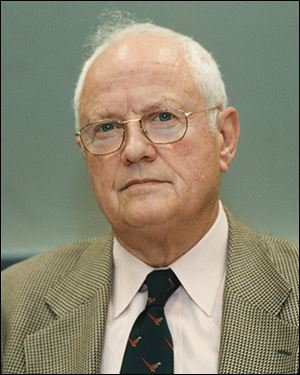
Thompson
Then in 2012 and 2013 Health Care REIT Inc. paid $4.3 billion, in stages, to acquire the properties of Sunrise Senior Living, Inc., a senior living firm with 125 high-quality properties in large metro areas of the United States, Canada, and the United Kingdom.
The company now partners with 14 of the health-care industry’s top operators of senior assisted living and long term and post acute care facilities.
“To summarize it, we are looking to find the highest-quality real estate in the best, most dynamic markets and operated by the best operators in health care,” said Jeff Miller, Health Care REIT’s chief operating officer. “We think that those are the best ingredients.”
That strategy has changed what Health Care REIT places in its portfolio.
It no longer owns or desires nursing home properties like the two in northwest Ohio with which it started.
“That disappeared in the late 1990s when the assisted-living industry emerged,” Mr. Miller said. “Even then, the company was into backing operators who were developing assisted-living facilities. When Fritz and Bruce stared Health Care Fund, skilled nursing was a relatively new field and it had just started to take off.”
Now the demand for senior housing with skilled nursing to assist with problems like dementia — which has fueled a rise in “memory centers” — has skyrocketed.
“The dementia is not even a problem, it’s an epidemic. And it’s going to get worse,” Mr. Miller said. “These new facilities are going to address that in a more holistic way.”
Evolving strategy
Mr. DeRosa said Health Care REIT’s strategy will continue to evolve, meaning the company’s portfolio could change again in the distant future if health-care trends keep evolving.
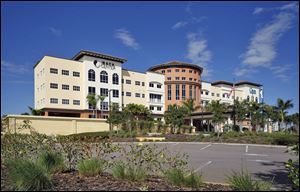
Crane Creek Medical Center in Melbourne, Fla., is another Health Care REIT property.
“The one thing that doesn’t fit what we own was the old model [of Health Care REIT]. The long-term Medicare/Medicaid nursing home is no longer part of our strategy, so we have sold $2.5 billion of nonstrategic health-care real estate over the last 10 years,” said Mr. DeRosa, who became CEO in April, 2014.
The company now desires properties to “deliver wellness” to an aging population, facilities that address nutrition, mobility, and cognitive ability, the CEO said.
“Health care is evolving,” Mr. DeRosa said. “There’s a lot of health-care real estate that can’t deliver the treatments that are needed because they are antiquated buildings.”
The CEO said he recently had lunch with Mr. Wolfe — Mr. Thompson died in 2005 — and talked about how the company began, where it is now, and where it might be headed.
“I asked him, ‘Did you ever imagine the size this company would become and its impact on healt-care delivery not only in the U.S., but in Canada and the U.K.?’”
“He just shook his head and said, ‘No,’” Mr. DeRosa said.
Contact Jon Chavez at: jchavez@theblade.com or 419-724-6128.